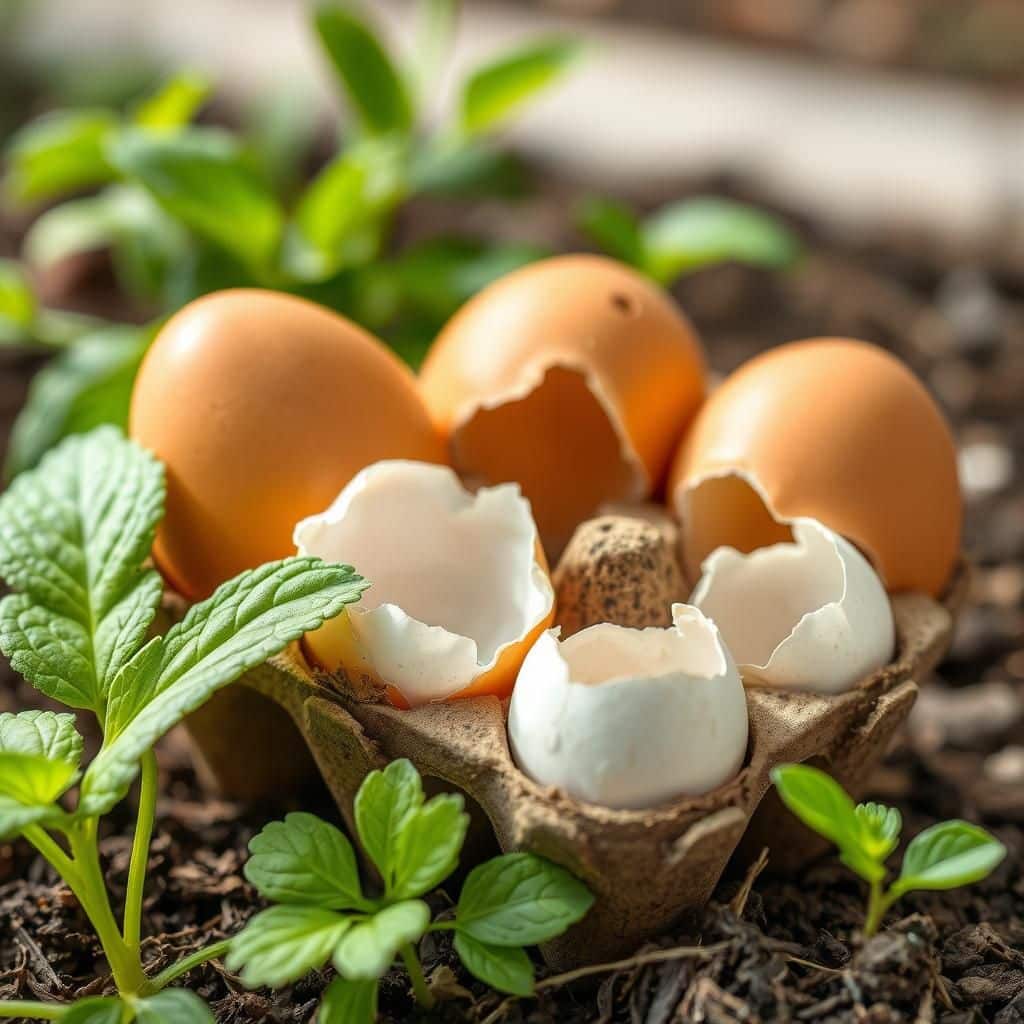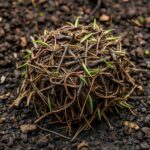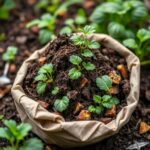Are Egg Shells Good for Plants? Discover the Benefits and Uses in Your Garden

When it comes to gardening, many of us are on the lookout for natural ways to enrich our soil and boost plant health. One often overlooked resource is eggshells, which are not only a common kitchen waste but also a valuable addition to your garden. Packed with calcium and other essential minerals, eggshells can enhance soil structure, deter pests, and improve plant growth. In this article, we will explore the various benefits and practical uses of eggshells in your garden, helping you make the most of this sustainable gardening practice. Discover how to turn this everyday waste into a powerful ally for your plants.
Are Egg Shells Beneficial for Plants?
Egg shells are often considered a valuable addition to the garden due to their high calcium content, which can help to strengthen plant cell walls and promote healthy growth. When crushed into a fine powder, egg shells can be integrated into the soil, providing a slow-release source of calcium that is essential for plants, particularly for those susceptible to calcium deficiency, such as tomatoes. Additionally, they can help to improve soil structure and aeration, allowing for better water retention and root development. Moreover, egg shells have been known to deter certain pests, making them a natural and cost-effective option for gardeners seeking to enhance the health of their plants.
Calcium Content in Egg Shells
Egg shells are composed of approximately 95% calcium carbonate, making them an excellent natural source of calcium for plants. Calcium plays a crucial role in plant growth by contributing to the formation of the cell wall and enabling better nutrient uptake. When egg shells break down in the soil, they release calcium slowly, which can be beneficial during the growing season when plants require consistent nutrient availability. This slow release helps prevent the sudden spikes in nutrients that can occur with synthetic fertilizers, promoting a more balanced soil environment.
Improving Soil Structure
Incorporating crushed egg shells into garden soil can significantly enhance its structure and drainage. The jagged edges of crushed shells help to improve aeration, allowing roots to access air and water more easily. This improved soil structure promotes healthy root growth and can lead to stronger, more resilient plants. Additionally, egg shells contribute to the overall texture of the soil, making it less compact and more hospitable for various beneficial organisms that thrive in a healthy soil ecosystem.
Pest Deterrent Properties
Crushed egg shells can also serve as a natural pest deterrent in the garden. The sharp edges of the broken shells can deter soft-bodied pests such as slugs and snails when sprinkled around the base of plants. These pests are typically avoided due to the discomfort of crossing the rough surface of the shells. However, while egg shells can help reduce pest activity, they should be used as part of an integrated pest management approach, rather than the sole method for pest control.
Application Techniques
To effectively utilize egg shells in the garden, they should be thoroughly cleaned and dried before use. After washing the shells to remove any egg residue, they can be baked briefly at low temperatures to ensure they are completely dry. Once prepared, the shells can be crushed into a coarse powder or smaller pieces, depending on the gardener’s preference. This crushed material can then be mixed into the garden soil or used as a top dressing around plants, ensuring that they benefit from the nutrients as the shells decompose over time.
Alternative Uses for Egg Shells in Gardening
Besides being a soil amendment, egg shells have various other beneficial uses in gardening. They can be used to create seedling pots by filling the half shells with soil and seeds, providing a biodegradable option that can be directly planted into the ground when the seedlings are ready. Additionally, egg shells can help to reduce acidity in soil when used in gardens with acid-loving plants, promoting a more balanced pH level. They can also be composted to enhance the nutrient content of compost piles, contributing to a more sustainable gardening practice.
| Benefit | Description |
|---|---|
| Calcium Source | Natural calcium from egg shells supports plant health and prevents deficiencies. |
| Soil Structure | Improves drainage and aeration, promoting healthy root development. |
| Pest Deterrent | Sharp edges help keep slugs and snails away from plants. |
| Seedling Pots | Can be used as biodegradable containers for starting seeds. |
| Composting | Adds valuable nutrients to compost while decomposing. |
How do you prepare eggshells for plants?


To prepare eggshells for plants, the process involves several steps to ensure that the shells are cleaned, dried, and processed into a form that can benefit your plants. Here’s a detailed guide on how to do this effectively.
Collection and Cleaning
The first step in preparing eggshells for plants is to collect and clean them properly to avoid any bacterial contamination or bad odors. Here’s how you can do it:
- Rinse the eggshells under cold water immediately after using the eggs.
- Scrub the inside with a soft brush to remove any remaining egg residue.
- Let the shells soak in a solution of water and vinegar for about 10 minutes if you want to ensure they are thoroughly disinfected.
Drying the Eggshells
Once the eggshells are cleaned, the next step is to dry them completely. This prevents mold growth and ensures their usability for your plants. Here’s how to dry the shells:
- Place the washed eggshells on a baking sheet lined with parchment paper.
- Set your oven to a low temperature (around 200°F or 93°C) and bake them for 10-15 minutes.
- Alternatively, you can air dry the shells on a countertop for a few days, turning them occasionally.
Crushing the Eggshells
After the eggshells are dry, they need to be crushed into smaller pieces or powder for easier application in your garden. Here’s how to do it:
- Use a blender or food processor to grind the dried shells into a fine powder.
- If you don’t have these, place the shells in a sealed bag and crush them with a rolling pin for larger particles.
- The desired texture can be adjusted based on how you plan to use the eggshells in your gardening.
Using Eggshells in the Garden
Eggshells can be utilized in various ways to enhance the health of your plants. Here are some common applications:
- Add crushed eggshells directly to the soil as a natural fertilizer to increase calcium content.
- Sprinkle the powder around the base of plants to deter pests such as slugs and snails.
- Mix eggshell powder with your compost pile to boost the nutrient profile of your compost.
Storage of Prepared Eggshells
Lastly, how you store your prepared eggshells can impact their shelf life and usability. Here are some tips on storage:
- Store the crushed eggshells in a sealed container to keep them dry and avoid moisture.
- Label the container with the date of preparation to ensure you use them within a reasonable timeframe.
- Keep the container in a cool, dark place to prevent any degradation or loss of potency.
What plants should not have egg shells?
Eggshells can be a beneficial addition to the garden due to their high calcium content, but there are certain plants that should not be given eggshells. The primary concern is that the decomposition of eggshells can create an overly alkaline environment in the soil, which may not be suitable for certain plants. Here are some plants that are best kept away from eggshells:
See also:
1. Acid-Loving Plants
Plants that thrive in acidic soils are negatively impacted by the alkaline nature of crushed eggshells. Introducing eggshells to their soil can disturb the pH balance, potentially harming these plants.
- Blueberries - They require a pH of 4.5 to 5.5.
- Azaleas - Preferring acidic conditions, they can suffer in higher pH environments.
- Rhododendrons - These plants need a soil pH of 5.0 to 5.5 for optimal growth.
2. Certain Fern Species
Certain types of ferns prefer moist, slightly acidic conditions. The addition of eggshells can alter the soil composition and pH, leading to decreased moisture retention and stunted growth.
- Boston Fern - Likes humid conditions and thrives in slightly acidic soil.
- Maidenhair Fern - Needs consistent moisture and can struggle with pH changes.
- Lady Fern - Prefers acidic, nutrient-rich soil which can be disrupted by eggshells.
3. Plants Sensitive to Calcium Levels
Some plants are not only sensitive to pH but also to calcium levels in the soil. Excessive calcium can affect the nutrient uptake and overall health of these plants.
- Spinach - High calcium levels can lead to inadequate magnesium uptake, affecting growth.
- Radishes - Can suffer from poor development when there is too much calcium in the soil.
- Potatoes - Excess calcium can lead to issues such as blight.
4. Cilantro and Other Herbs
Herbs like cilantro thrive in well-drained soil that is not overly enriched with calcium. The introduction of eggshells can lead to nutrient imbalances.
- Cilantro - Prefers a neutral pH and may get stunted if the soil becomes too alkaline.
- Basil - While it can tolerate various soil types, too much calcium can cause nutrient lockout.
- Dill - Sensitive to soil pH, it grows best in slightly acidic conditions.
5. Tropical Plants
Many tropical plants prefer consistent moisture and have specific nutrient needs that can be disrupted by introducing eggshells into their growing medium.
- Orchids - Require well-aerated, specific potting mixes that don’t benefit from added calcium.
- Fiddle Leaf Fig - Thrives in well-draining soil without excessive calcium presence.
- Bromeliads - Prefer moisture-rich environments and can suffer from nutrient competition due to eggshells.
Questions from Our Readers
Are egg shells beneficial for plants?
Yes, egg shells are beneficial for plants as they provide a good source of calcium, which is essential for healthy plant growth. When crushed and added to the soil, they help improve soil structure and can prevent common problems like blossom end rot in tomatoes.
How should I prepare egg shells for my garden?
To prepare egg shells for your garden, rinse them to remove any egg residue, then let them dry. Once dry, crush them into small pieces or a fine powder to make it easier for plants to absorb the nutrients they contain when added to the soil.
Can egg shells help with pests in the garden?
Yes, crushed egg shells can help deter certain pests in the garden, such as slugs and snails. The sharp edges of the shells can create a barrier that these pests are reluctant to cross, offering an organic method of protecting your plants.
See also:
How often should I use egg shells in my garden?
You can use egg shells in your garden regularly, as they break down slowly and gradually release calcium into the soil. It’s recommended to add them during planting and throughout the growing season to continuously enrich the soil.

If you want to read more articles like Are Egg Shells Good for Plants? Discover the Benefits and Uses in Your Garden, we recommend you check out our Compost category.
Leave a Reply

Related Articles